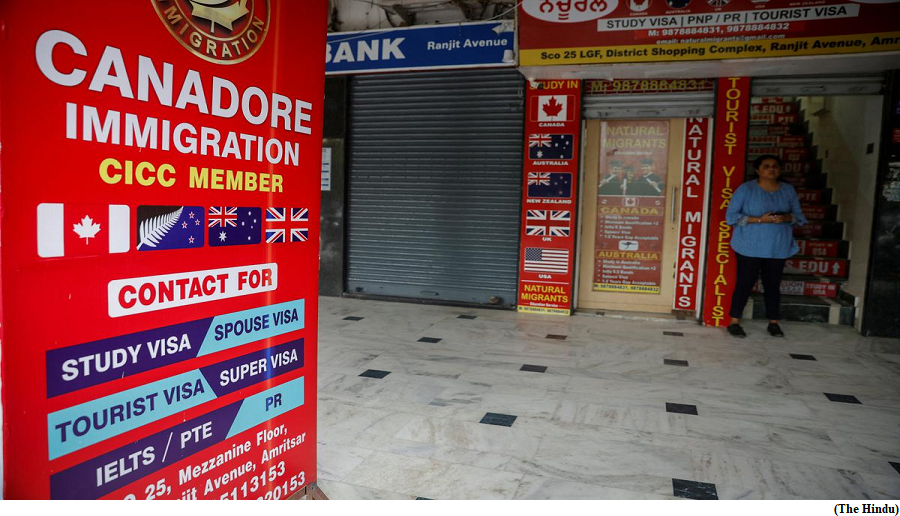Dusted Apollo sighted for first time in Himachal’s Chamba (GS Paper 3, Science and Technology)

Why in news?
- Dusted Apollo (Parnassius stenosemus), a rare high-altitude butterfly, has been sighted and photographed for the first time in Himachal Pradesh, indicating the flourishing diversity of Apollo butterflies in the region.
- The butterfly was sighted and photographed in September 2023, during a trek to Manimahesh Lake in Chamba. The species was discovered in 1890.
Habitat:
- The distribution range of Dusted Apollo extends from Ladakh to west Nepal and it flies between 3,500 to 4,800 metres in the inner Himalayas.
- Dusted Apollo is extremely rare and has never been photographed before in Himachal Pradesh.
Key features:
- The Dusted Apollo species closely resembles Ladakh Banded Apollo (Parnnasius stoliczkanus).
- But the discal band on the upper fore wing in Dusted Apollo is complete and extends from costa to vein one, whereas the discal band is incomplete and extends only up to vein four in Ladakh Banded Apollo.
- Moreover, the Dark marginal band on the hind wings is much narrower in Dusted Apollo while it is broad in Ladakh Banded Apollo.
Regal Apollo:
- Another rare species, Regal Apollo (Parnnasius charltonius), which is protected under Schedule II of the Wildlife Protection Act, 1972, was also photographed at Manimahesh.
Apollo butterflies:
- Apollos are considered commercially important butterflies and they fetch high prices in the poaching industry.
- There are 11 Apollo species recorded from Himachal Pradesh and five of them are declared as Scheduled species.
- Most of the Apollo butterflies are now endangered and need immediate attention for their conservation and protection.
Why are nations revising rules for foreign students?
(GS Paper 2, Education)
Why in news?
- Migrating abroad, especially to English- speaking countries, is set to become harder for Indian students aspiring to pursue a higher education, what with countries such as Canada and the U.K. tightening rules to seek admissions to universities.

What are the new set of changes?
- Following the political turmoil between India and Canada in December 2023, the Canadian government issued revised requirements that it said are ‘to better protect international students.’
- The foremost of these was to upwardly revise the Guaranteed Investment Certificate (GIC) amount from 10,000 Canadian dollars, which amounts to ₹6.15 lakh, to over double at 20,635 Canadian dollars, close to ₹12.7 lakh.
- In another instance, the U.K. announced that come 2024, international students will be restricted from bringing in dependant family with them as they pursue their studies.
- Countries such as Germany and Australia too have gradually increased the GIC amount by approximately 10% annually. As on May 2023, the amount required to apply for a German visa is 11,208 euros which is ₹10 lakh, up from the earlier cap of 10,000 euros.
Which students have been hit the most?
- Canada is restricting the total number of study permits or student visas it plans to issue to 3.6 lakh (earlier this was nearly four lakh). India alone used to send up to 1.4 lakh students to Canada, approximately 80% percent of whom went to study diploma level courses there.
- Earlier, aspirants looking to migrate to Canada would take any diploma as the ‘study abroad’ option, essentially as a passport to migrate to the country in poorly equipped educational institutions, while a spouse visa work permit would allow their spouses to work while the aspirant studied. People would take on hefty loans to fuel this move.
- Now Canada has stated that while they will issue a spouse visa, the spouse will not have a work permit.
How are tightened rules affecting students?
- While Canada aims to rein in its burgeoning ‘diploma mills’ problem, it has eased norms for masters program students to come in.
- Masters students can apply for a three-year work permit after their course is complete. However, the stricter guidelines have put those who want to seek a Bachelors’ degree in Canada in the lurch.
What about other foreign countries?
- UpGrad Abroad analysed data of 25,000 aspirational students who showed interest in studying abroad. While 18% of this pool was interested in studying in Canada during the data collected between January to July last year, this demand dropped by half to 9.3%, in the data analysed between July and December, last year.
- On the contrary, a destination like Germany, which had initially been in demand with nearly 17% students, is now attracting demand from 32% students.
- Apart from Australia, New Zealand, Ireland, the Netherlands and Finland, the newer destinations like Taiwan and Israel are also emerging in the list of potential study abroad destinations as they want to attract Indian talent to their countries.



